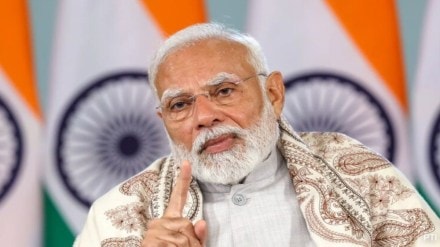In the 122nd episode of his monthly radio programme Mann Ki Baat, Prime Minister Narendra Modi spotlighted an innovative initiative by the Central Board of Secondary Education (CBSE) — the installation of ‘Sugar Boards’ in schools. Breaking away from the traditional classroom tool of blackboards, these new ‘sugar boards’, as the PM called them, aim to raise awareness among students about their daily sugar intake and encourage healthier lifestyle choices from an early age.
“Friends, you must have seen blackboards in schools, but now ‘sugar boards’ are also being installed in some schools – not blackboard, but sugar board! The aim of this unique initiative of CBSE is to make children aware of their sugar intake. By understanding how much sugar should be consumed and how much sugar is being consumed, children have started choosing healthy options themselves,” said PM Modi.
Calling the campaign a ‘unique effort’, he noted its positive impact on children and emphasised the need to extend such awareness campaigns beyond schools to offices, canteens and other institutions. “After all, if there is health, there is everything. Fit India is the foundation of a strong India,” the Prime Minister added.
What are ‘sugar boards’?
The concept of sugar boards was formally introduced by CBSE in a letter dated May 14, 2025, addressed to all principals of affiliated schools. The letter urged schools to set up designated information panels or display boards — called ‘Sugar Boards’ — that educate students about the sugar content in commonly consumed foods and beverages, and highlight the risks of high sugar consumption.
The initiative comes amid growing concern over the rise of Type 2 diabetes and obesity in children — health issues that were once considered adult conditions but are now increasingly seen in younger age groups. CBSE pointed out that sugary snacks, processed foods and beverages are major contributors to this trend.
Studies cited in the CBSE letter reveal that children aged 4-10 consume sugar equivalent to 13 per cent of their daily calorie intake, while those between 11 and 18 years consume around 15 per cent — far exceeding the recommended intake of five per cent.
Educating to empower
Sugar Boards aim to be more than just informative posters. They are designed to empower students by providing practical knowledge, such as:
- The recommended daily sugar intake for children
- The hidden sugar content in junk food, colas, packaged juices, and processed snacks
- The short- and long-term health effects of consuming excess sugar, including diabetes, obesity, dental issues, and energy crashes
- Healthy alternatives and tips to reduce sugar intake
Some schools have already begun implementing interactive activities, workshops and peer-learning sessions around the concept of sugar boards, sparking conversations among students and even prompting changes in cafeteria menus.
A model for broader adoption
The positive reception of this initiative has inspired suggestions to implement similar awareness mechanisms in other settings. As PM Modi noted, the success in schools could serve as a model for health education campaigns in corporate offices, canteens, public institutions, and more.
The Sugar Board initiative aligns with broader national movements like Fit India Movement and Eat Right India, reinforcing the government’s focus on preventive healthcare and lifestyle modification.
In an age where packaged and processed foods are ubiquitous, the CBSE’s Sugar Board initiative offers a much-needed counterbalance by promoting mindful eating habits.
